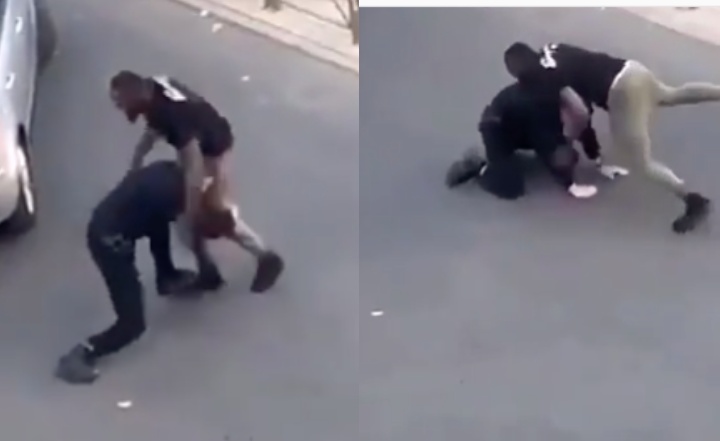You’ve probably had a chance to see all of those inefficient martial arts techniques on Instagram, Youtube and similar, right? And, while it seems that they are often a laughing stock for some people, it is extremely worrying that some of these inefficient techniques are being taught to law enforcement officers, security workers and similar professionals.
Rory van Vliet, a BJJ black belt with heaps of experience in lines of work that require handling people, shows the most commonly seen variations of these techniques and explains which kind of an approach should be taken on instead – the one of BJJ: closing the distance and/or going for the back.
INEFFECTIVE TECHNIQUES
To start off, Rory shows the straight armbar takedown technique. „It looks great on paper“, he says, but continues to explain he has only had two instances where this security technique actually worked: once when he had to control a woman that was significantly weaker than he was, and once when he was confronting a drunk person. What’s more, he points out that this sort of a technique is not only terribly ineffective when engaging a stronger person; but that it is also very dangerous to train, as training it properly means using it to full extent, which can easily lead to a broken hand or an ugly faceplant and head injuries.
So, this technique has two bad sides to it: it’s not trained well enough because of the injury dangers it poses and is also inefficient when performed on a stronger, resisting opponent.
Another security technique is the escort position. Even though he basically doesn’t have anything against it, Rory says that it is a risky one as well.
Why? Because, in order to apply a joint lock and to control a person like this technique is supposed to be doing, you need a lever, a fulcrum and an anchor point… And it is the anchor point, explains Rory, that these techniques rarely possess. There’s no immobilization of hips, shoulders or similar – and if the other person can move their shoulder, for example, then they can escape and retaliate.
Rory elaborates that another thing which is resorted to often are pain compliance techniques; for example, cranking a wrist lock in order to control the person. However, Rory explains that this rarely works in situations where a person is drunk or intoxicated due to drugs, for they become ignorant of the pain under the influence.
Also, due to their aggressive nature, these techniques often pose a fertile ground for a situational escalation.
GRAPPLING IS THE ANSWER
As the best possible alternative to the inefficiency of these security techniques, Rory advises resorting to the lessons of Brazilian Jiu Jitsu: to close the distance or/and to go behind their back!
Try and aim to get as close to their body as possible, to get into a clinch and to control the legs, the hips or shoulders. There’s still some danger of being punched from here, Rory mentions, but you’ll minimize the danger from being incapacitated as much as possible by taking on this sort of an approach.
From there, you can transition to the back and go for a takedown and control. Rory also emphasizes that resorting to a Rear Naked Choke from here should only be an option if your life is in danger.
So, if you are not completely out of the harm’s way and keeping the distance with the other person, it’s all about closing that distance as much as possible!
Watch the video below to see Rory explaining this with Stephan Kesting in more detail:
Jiu-Jitsu Based Self Defense Solutions by Eli Knight. Learn how to use BJJ for its most powerful use, protecting yourself from an attacker on the street.
BJJ Black Belt Eli Knight shows how to use BJJ for self defense in 8 volumes of dedicated real world situations.


















